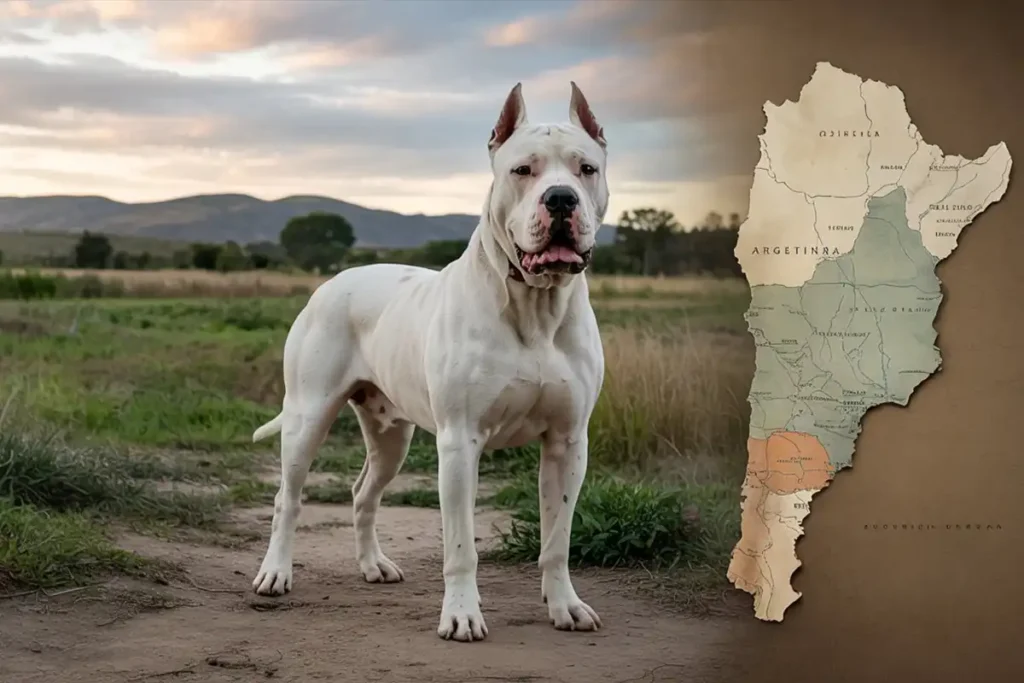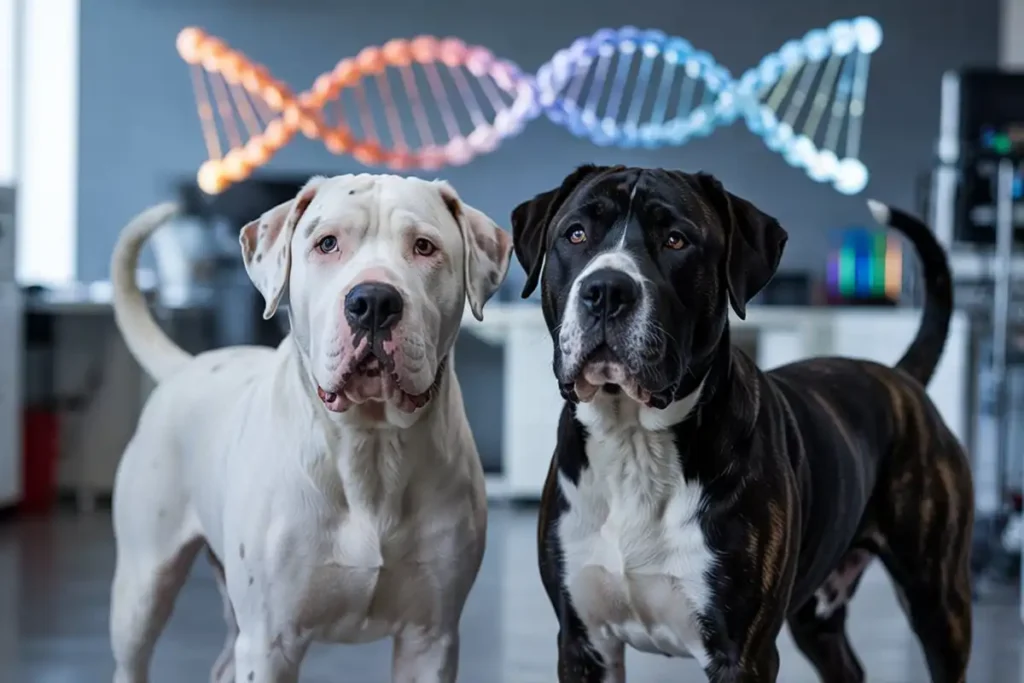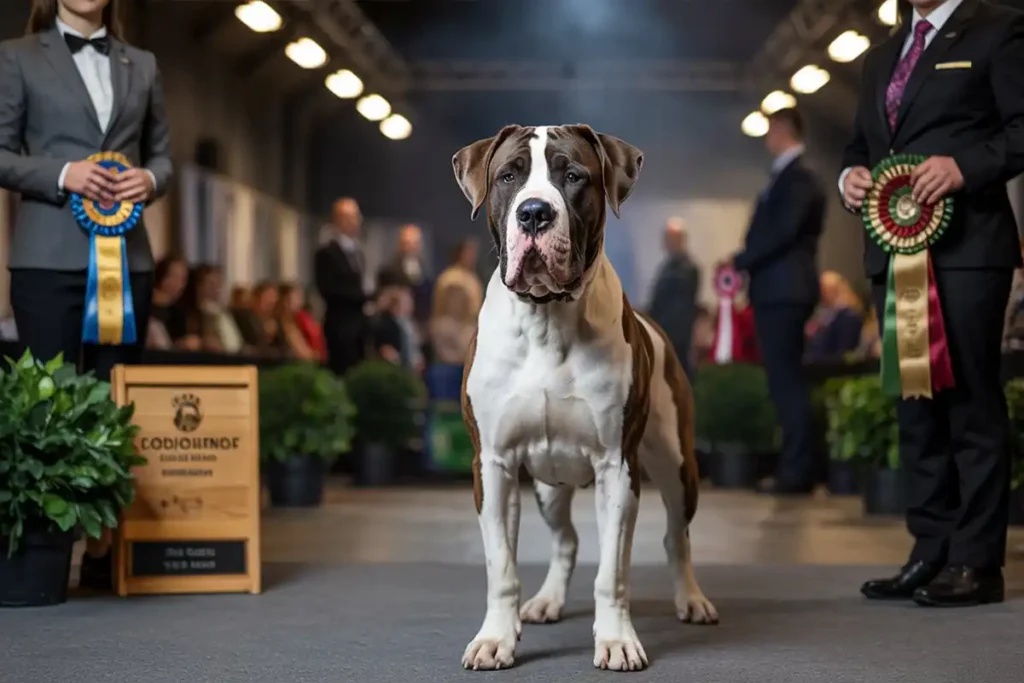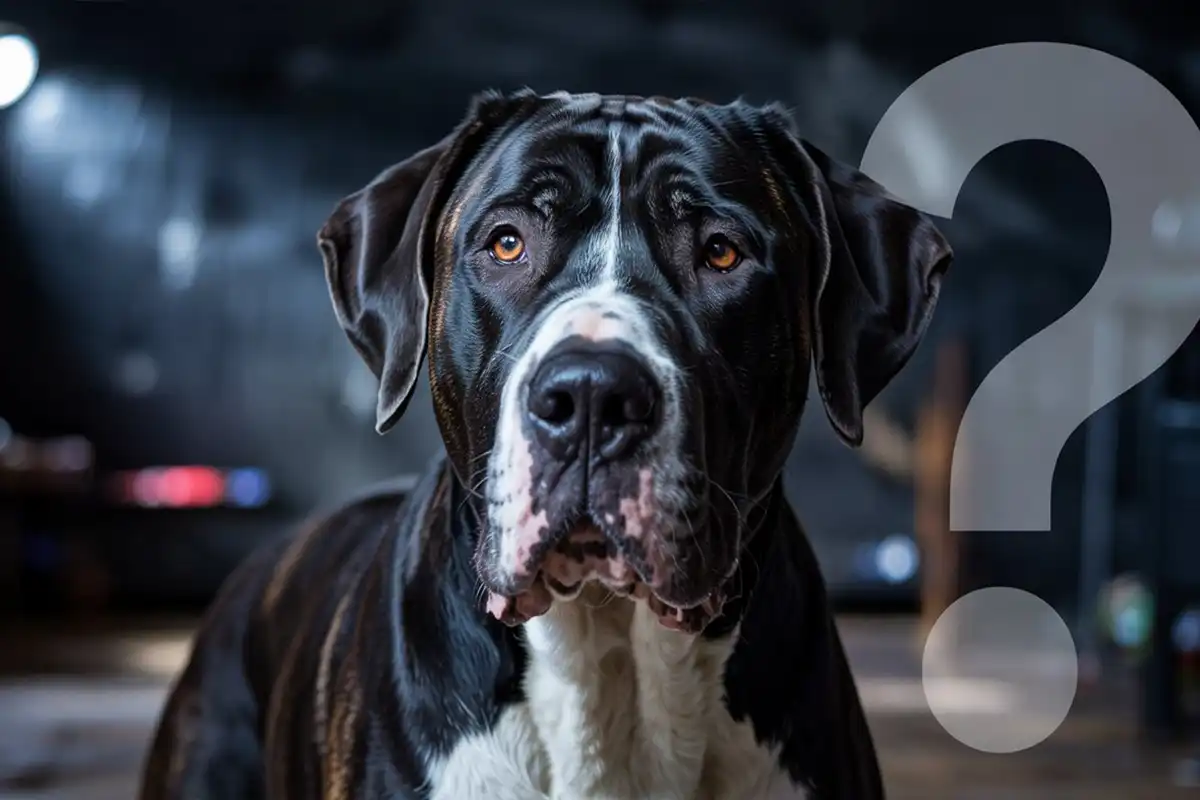When dog lovers search for powerful, loyal, and striking breeds, the Dogo Argentino black often sparks curiosity—and sometimes confusion. Known for its bold appearance and muscular build, the Dogo Argentino has earned a reputation as a fearless guardian and skilled hunter. But what happens when this typically white-coated breed appears in black? Is it rare, controversial, or even real? These questions ignite debates among breeders, enthusiasts, and canine registries around the world.
In this post, you’ll discover 10 fascinating facts about the so-called black Dogo Argentino—from its origins in Argentina to the genetic mysteries behind its coat color. We’ll also explore the myths, the science, and the standards set by organizations like the Fédération Cynologique Internationale (FCI). Whether you’re a first-time dog owner, an experienced handler, or just fascinated by unique canine traits, this deep dive into the world of the black Dogo Argentino will give you clarity and insight.
Let’s unpack the truth behind this rare and captivating variation of one of the world’s most powerful breeds.
The Origin of the Dogo Argentino: A Proud History
Dogo Argentino and Argentina: A National Treasure
Argentina takes great pride in the creation of the Dogo Argentino—a breed developed not just for function, but also as a symbol of national strength and resilience. In the rugged terrain of Córdoba, hunters needed a powerful, loyal dog capable of chasing down wild boar and puma. The Dogo Argentino emerged from this need, blending physical power with sharp intelligence and unwavering loyalty. For Argentinians, the breed represents more than just a hunting companion—it reflects their heritage, culture, and determination. Even today, debates about variations like the Dogo Argentino black stir strong opinions across the country, underscoring the breed’s deep national significance.

Antonio Nores Martinez: The Vision Behind the Breed
Dr. Antonio Nores Martinez didn’t just breed a new dog—he built a legacy. In the 1920s, he carefully designed the Dogo Argentino to be both a fearless hunter and a trustworthy family protector. Martinez didn’t rely on guesswork; he studied genetics, behavior, and functionality to create a breed that could thrive in the harsh conditions of Argentina. His passion and precision laid the foundation for what would become one of the world’s most impressive working breeds. Today, when enthusiasts debate rare variations like the Dogo Argentino black, they often refer back to Martinez’s original vision—reminding us that purpose always came before appearance.
Breed Development: Crossing Mastiffs, Boxers, and Pitbulls
Creating the Dogo Argentino involved a complex and intentional process of crossbreeding. Antonio Nores Martinez began with the now-extinct Cordoba Fighting Dog and introduced other breeds like the Boxer, Spanish Mastiff, Great Dane, Bull Terrier, and American Pitbull Terrier. Each breed contributed specific traits: the Mastiff added size and strength, the Boxer brought agility and energy, and the Pitbull offered tenacity and courage. Through this calculated development, Martinez created a well-balanced dog capable of hunting, guarding, and bonding with humans. Discussions about the Dogo Argentino black often trace back to this breeding process, as some speculate whether certain genes from these ancestors could explain modern coat color variations.
Fédération Cynologique Internationale (FCI) Recognition
In 1973, the Fédération Cynologique Internationale (FCI) officially recognized the Dogo Argentino as a standard breed, solidifying its place on the global stage. With this recognition came strict guidelines—especially regarding coat color. The FCI breed standard defines the Dogo Argentino as solid white, allowing only a small dark patch near one eye. Any other coloration, including a full black coat, disqualifies the dog from official registration or conformation shows. Despite this, the Dogo Argentino black continues to appear in online discussions and alternative breeding circles, raising questions about whether breed standards should evolve with modern genetics.
The Black Dogo Argentino Controversy
Why Black Dogo Argentinos Are Controversial
The appearance of black-coated Dogos stirs strong opinions within the dog community. Traditionalists argue that the breed’s identity ties directly to its solid white coat, while others believe that color shouldn’t define the dog’s value or capabilities. Because official breed standards exclude black coats, many breeders consider black Dogos ineligible for registration or show. Critics also raise concerns about breeders marketing these dogs as “rare” to inflate their value. The presence of a Dogo Argentino black in the market often leads to heated debates about authenticity, ethics, and the future of the breed.
Understanding the FCI Breed Standards
The Fédération Cynologique Internationale (FCI) sets the global breed standards for the Dogo Argentino. According to their official description, the ideal Dogo should have a completely white coat, with only a single black or dark patch allowed around one eye. This standard aims to preserve the breed’s original look, developed by Antonio Nores Martinez. Any deviation—especially a full black coat—disqualifies the dog from competitions and registration under FCI. As more unregistered breeders promote the Dogo Argentino black, the divide between tradition and modern interpretations grows sharper.
Can Black Be a Natural Coat Color? A Look at Genetics
Coat color comes down to genetics, and in the case of the Dogo Argentino, breeders have long selected for the recessive genes responsible for a pure white coat. However, when you introduce dominant color genes through crossbreeding—whether intentional or accidental—black pigmentation can reappear. Some experts argue that the presence of a Dogo Argentino black suggests a genetic link to breeds like the Pitbull or Cane Corso, which carry strong black coat genes. While this doesn’t always mean a dog is less capable, it does challenge purists who want to preserve the breed’s original genetic profile.
The “Black Dogo” Myth Explained
The term “black Dogo” often gets thrown around in online ads and breeder listings, but confusion surrounds what it actually means. Some claim it’s a rare genetic mutation within the breed, while others insist that any true Dogo Argentino must be white. In reality, most dogs labeled as Dogo Argentino black tend to be crossbreeds—still resembling the Dogo in form and temperament, but lacking the pure lineage required by breed standards. This myth persists largely because of social media hype and misleading marketing, which can fool unsuspecting buyers into believing they’re getting something both rare and official.
Genetics and Coat Colors in Dogo Argentinos
Accepted Dogo Argentino Coat Colors
The official breed standard accepts only one primary coat color for the Dogo Argentino: solid white. The Fédération Cynologique Internationale (FCI) allows a single dark patch near one eye, but even that is considered less desirable in show circles. This strict standard preserves the breed’s traditional identity and purpose, especially since the white coat helped hunters spot their dogs in the field. Any additional markings or full-body color changes fall outside of accepted norms. When a Dogo Argentino black appears, it immediately raises questions about the dog’s lineage, since black is not a recognized color for the breed.

Coat Color Genetics and How It Works
Coat color in dogs depends on complex genetic interactions between dominant and recessive alleles. The Dogo Argentino’s white coat comes from a genetic makeup that masks pigment—primarily through the extreme white piebald gene. However, if breeders introduce dominant color genes through crossbreeding, those hidden traits can resurface in offspring. This explains why some litters unexpectedly produce darker-colored puppies. While genetics can allow for various outcomes, producing a Dogo Argentino black typically involves either mutation or mixed ancestry, which disqualifies the dog from official breed registries.
Are Black Dogo Argentinos Purebred?
Purity in dog breeding follows strict guidelines, especially for established breeds like the Dogo Argentino. Since the breed standard explicitly defines a white coat as essential, any black-coated individual automatically falls outside of that definition. Although a black dog may strongly resemble a Dogo in structure and temperament, breed organizations do not recognize it as purebred. Most experts agree that a true Dogo Argentino black likely results from crossbreeding, even if unintentionally. Without verified pedigree documentation, claims of purebred status should be met with skepticism.
Role of Crossbreeds in Coat Variation
Crossbreeding can significantly impact coat color, and this holds especially true in the Dogo Argentino lineage. When breeders mix Dogos with darker-coated breeds—such as Pitbulls, Cane Corsos, or Mastiffs—the resulting pups may inherit dominant black or brindle genes. This kind of genetic influence explains the growing number of black or mixed-color Dogos in the market. While these dogs may still display the strength and loyalty of the original breed, they do not meet the official standard. Every time someone encounters a Dogo Argentino black, they should consider the likelihood of crossbreeding as the source of that coat variation.
Appearance, Temperament, and Behavior
Physical Traits of the Dogo Argentino
The Dogo Argentino stands out with its muscular build, deep chest, and powerful jaw. Its body structure reflects strength and agility, ideal for chasing large prey in rough terrain. With a large, square head, expressive dark eyes, and a short, smooth coat, the breed shows a balance of power and grace. The official standard calls for a solid white coat, with very limited markings allowed. When a Dogo Argentino black appears, it deviates from this established look, raising questions about whether it matches the breed’s signature traits or comes from a different lineage altogether.
Temperament: Loyal, Protective, and Athletic
The Dogo Argentino thrives on loyalty and purpose. Originally bred as a pack-hunting dog, this breed shows unwavering dedication to its family and excels as a protector. It’s alert, courageous, and highly confident—traits that make it both a working dog and a loving companion when trained properly. This natural athleticism also means the breed needs plenty of physical and mental stimulation to stay balanced. A Dogo Argentino black, if sharing the same behavioral qualities, may still reflect the breed’s temperament, even if its appearance sparks debate in the community.

Training Tips for Strong-Willed Breeds
The Dogo Argentino requires firm, consistent training from an early age. This breed responds best to confident leadership and positive reinforcement techniques. Owners must establish boundaries early on to prevent dominant behavior. Because the Dogo is intelligent and eager to work, mental challenges—like obedience drills or scent tracking—keep it focused and well-behaved. Whether you’re training a standard white dog or a Dogo Argentino black, the key is structure, consistency, and socialization to help develop a well-rounded temperament.
Socialization and Behavior in Different Settings
Socialization plays a major role in shaping the Dogo Argentino’s behavior. Introducing the dog to new people, pets, and environments helps reduce territorial tendencies and encourages confidence. A properly socialized Dogo can be calm in busy places, gentle with children, and respectful around strangers. Without this early exposure, the breed may grow overly protective or reactive. When owners raise a Dogo Argentino black, they must treat socialization as a priority—not just for behavior, but also to overcome the misconceptions that often come with its controversial appearance.
The Role of Dogo Argentinos Today
Dogo Argentinos in Dog Shows and Conformation Events
In the world of dog shows and conformation events, appearance matters just as much as performance. The Dogo Argentino competes in working and guardian categories, where judges evaluate its structure, movement, and adherence to breed standards. A solid white coat with only minimal markings is required for entry, which makes any off-standard color an immediate disqualification. Despite having the same physical abilities, a Dogo Argentino black cannot participate in official shows under Fédération Cynologique Internationale (FCI) rules. As a result, many black-coated Dogos find themselves sidelined from conformation events, even if they excel in all other aspects of the breed’s profile.

The Breed’s Role in Modern Hunting and Protection
Even in today’s world, the Dogo Argentino continues to fulfill the roles it was bred for: big-game hunting and property protection. In rural areas of Argentina and parts of the U.S., hunters still rely on Dogos to track and hold wild boars. Their physical power and high pain tolerance make them ideal for tough tasks. At the same time, their loyalty and territorial instincts make them outstanding guardians of homes and livestock. While a Dogo Argentino black may not meet show standards, it often performs just as well in hunting and protection—reminding us that function sometimes outweighs form.
Controversies and Breed Restrictions Worldwide
The Dogo Argentino remains a controversial breed in several countries due to its strength, protective nature, and appearance. Some nations—like the UK, Australia, and parts of Canada—have restricted or outright banned the breed over concerns about aggression and misuse by irresponsible owners. These laws often don’t distinguish between well-trained dogs and those raised improperly. When you add the Dogo Argentino black into the mix, controversy grows even louder. Critics question whether black-coated versions dilute the breed’s identity, while others argue that responsible ownership matters far more than color or reputation.
What Prospective Owners Should Know
Anyone considering a Dogo Argentino needs to understand the breed’s physical demands, strong personality, and need for proper training. This dog isn’t ideal for first-time owners or passive handlers—it thrives with structure, activity, and a confident leader. Owners must also prepare for attention and scrutiny, especially if their dog doesn’t fit the expected look. If you’re thinking about adopting a Dogo Argentino black, research the breeder thoroughly, ask about lineage and health testing, and decide whether official registration matters to you. Above all, be ready to commit to a powerful, loyal dog that requires respect, consistency, and care.
Conclusion
The Dogo Argentino stands as one of the most powerful and loyal dog breeds in the world, with a fascinating origin rooted in Argentina’s rugged landscapes. Its muscular build, courageous heart, and instinctive drive to protect make it an ideal companion for experienced owners who value both strength and sensitivity in a dog.
When it comes to the Dogo Argentino black, opinions continue to divide the dog-loving community. Some see it as a stunning and rare variation, while others view it as a sign of crossbreeding that strays from the original breed standard. Regardless of where you stand in the debate, one thing remains true—these dogs, black or white, deserve knowledgeable and responsible care.
If you’re considering adding a Dogo Argentino black to your home, educate yourself on the breed’s unique traits, training needs, and social requirements. Understand the genetic history that shapes its appearance and the controversy that may follow. Just because a dog doesn’t meet the strict show standards doesn’t mean it lacks value, loyalty, or capability.
Whether you’re drawn to the classic white Dogo or intrigued by the mystique of a Dogo Argentino black, make your decision based on research, not trends. Focus on temperament, health, and purpose—not just color. With the right guidance and commitment, any Dogo Argentino can become an extraordinary addition to your family.
Read More About This Breed and how to care of it in this Article.
Why is a Dogo Argentino Puppy is the perfect Pet you can Have? Find Out Now
Look for The Best Stuff For your Pet on PetMD Official.
